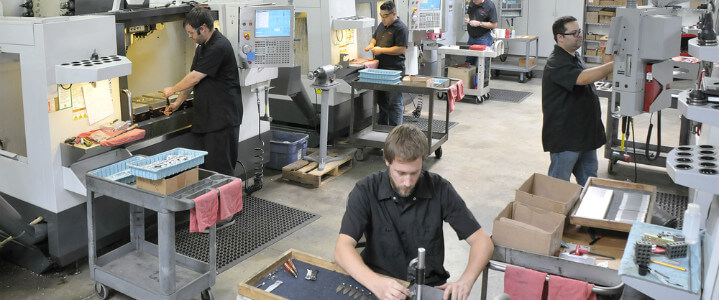Industrial work can be physically demanding and even pose a variety of ergonomic hazards. However, with an industrial ergonomics training program in place, organizations can ensure that their employees are working in a safe environment with minimal risk of injury or fatigue.
What is Industrial Ergonomics?
Ergonomics for industrial workers is concerned with adapting the requirements of a job to the physical needs of humans, and it is a crucial aspect of workplace safety and well-being. By incorporating industrial ergonomic principles into the design of workspaces and equipment, employers can reduce the risk of on-the-job illness and injury.
Benefits of Implementing Ergonomics in the Workplace
Implementing ergonomic practices in industrial settings is essential for reducing the risk of developing musculoskeletal disorders in high-risk industries such as construction and food processing. By applying ergonomic principles, workers can avoid on-the-job illness and injury, and their job satisfaction can be improved through measures that provide a greater degree of comfort and safety.
Why You Need An Industrial Ergonomics Training Program
Industrial ergonomics training programs are designed to lower the risk of work-related injuries and improve employee productivity and morale through well-being. Ergonomic training ensures that everyone is informed about how to apply ergonomic principles in their daily work routine.

By providing ergonomic training, employers can create a safer and more comfortable work environment, leading to increased job satisfaction and productivity. Overall, understanding industrial ergonomics and its importance is crucial for creating a safe and productive work environment.
Elements of an Effective Ergonomics Training Program
There are several elements of an effective industrial ergonomics training program. These include identifying and assessing ergonomic risk factors, training workers and supervisors on ergonomics principles and practices, implementing engineering and administrative controls to reduce ergonomic hazards, and evaluating the program’s overall effectiveness.
Additionally, OSHA recommends that an effective ergonomics training program should include the identification of workplace risk factors, job analysis methods, implementation and evaluation of control measures, and teamwork skills.
Other important elements of an effective ergonomics training program include management commitment and involvement, worker involvement and participation, and ongoing safety evaluation and improvement.
Identifying and Assessing Ergonomic Hazards in The Workplace
It is important to identify and assess ergonomic hazards in the workplace as they can lead to musculoskeletal disorders (MSDs), which are a major cause of work-related disability. Once these hazards have been identified, it is important to assess their impact on workers’ health and safety.

Common Ergonomic Hazards in Industrial Work
Below are several prevalent ergonomic hazards you should look out for in the workplace.
- Heavy Lifting: The act of moving or carrying objects that are too heavy for a person to lift safely without assistance, which can lead to strains and other injuries.
- Poor Posture: The position of the body while sitting, standing, or performing tasks that is not aligned properly, which can cause strain and discomfort in muscles and joints.
- Repetitive Motion Injuries: Injuries resulting from performing the same motions repeatedly, such as typing or using a tool, which can cause strain and damage to muscles, tendons, and nerves over time.
- Excessive Vibration: Exposure to high levels of vibration from tools or machinery, which can cause damage to nerves, muscles, and joints and lead to conditions such as hand-arm vibration syndrome.
- Slips and Falls: Accidents resulting from slipping or tripping on a surface that is wet, uneven, or cluttered can cause injuries such as sprains, fractures, and head trauma.
- Stationary Positions: Maintaining the same position for extended periods of time, such as sitting or standing, can cause strain and discomfort in muscles and joints.
- Contact Stress: Pressure on the body from hard surfaces or tools, which can cause discomfort, pain, and injury.
- Extreme Temperatures: Exposure to temperatures that are too hot or too cold, which can cause heat exhaustion, hypothermia, or other health issues.
- Excessive Noise: Exposure to high levels of noise, which can cause hearing loss and other health problems.
- Poor Lighting: Insufficient lighting or glare can cause eye strain, headaches, and other vision problems, as well as increase the risk of accidents and errors.
Once the risks have been assessed, appropriate measures should be taken to reduce or eliminate them. This could include changes in job design or working environment, such as improved lighting or better tools.

Safety By Design Can Improve Your Industrial Ergonomics
Safety By Design provides industrial ergonomics training to help organizations improve the safety and productivity of their workplaces. Our safety training courses focus on the design of workspaces to reduce the risk of injury, as well as the ergonomics principles that are essential for efficient and safe work.
Contact the Safety By Design team today to schedule a consultation!
Tags: ergonomics, industrial safety tips, workplace safety


